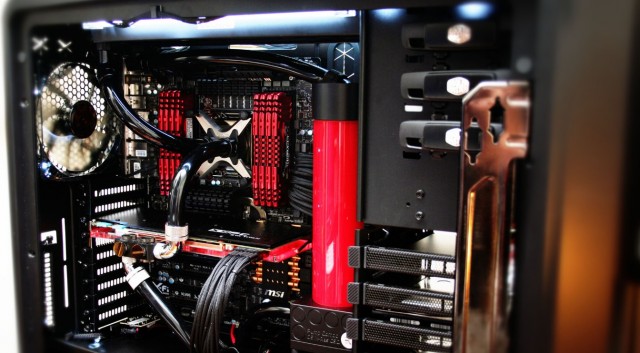According to the most recent statistics, the chances of being hit by lightning are around 300,000 to one, although this must be caveated by the fact that there are more than seven billion people living in the world today.
In the UK, approximately three people are killed by lightening every single year, with the Royal Society for the Prevention of Accidents suggesting that the odds of being struck in Britain are 66-times shorter than the global average.
It’s not only people who are at risk of being hit by lightning, however, as homes and electrical appliances may also be irreparably damaged. Below, we’ll look at how you can protect your computer during a thunderstorm.

How Might Lightening Affect your Computer?
Whilst there’s a tendency to think that desktop computers are outdated in the digital age, 88% of all UK households owned this type of device at the end of 2018.
This means that homes nationwide could see their computers impacted by a lightning strike, particularly as these devices are sensitive to power line interference.
In the event of a thunder and lightning storm, you may well experience significant power voltage strikes that trigger potential brown-outs and internal melt-downs (if your device is struck directly by a lightning bolt).
In fact, the power voltage strikes caused by thunderstorms can cause irreparable damage to computer hardware and modems, from melted circuit boards to internal fires that may spread throughout the home if they’re not tackled at source.
How can you Protect your Computer During a Thunderstorm?
So, we hear you ask, what steps can be taken to protect your computer in the event of a thunderstorm?
One of the most effective measures is to switch off your device and unplug it from the electrical mains supply, whilst you should also consider unplugging your router from the mains and the telephone line.
You can also buy and install and so-called “surge processor” to protect your computer in the event of a thunderstorm, but you should note that this does not offer an adequate safeguard if the device is actually struck by a lightning bolt.
The nature of your computer’s power source can also be impactful, so we’d recommend investing in the type of AC-DC convertors sold by XP Power. After all, linear or transformerless power supplies are only safely usable in circumstances where a connected device is enclosed and prevented from coming into contact with people.
Make no mistake; being in contact with a transformerless power supply puts you at significant risk of being electrocuted, particularly in the event of power surges caused during a thunderstorm.
In contrast, AC-DC power is essentially a hybrid (or switching) supply that converts linear voltage safely, creating a stable power output that’s ideal for everyday electrical appliances.
This undoubtedly provides an additional layer of security in the event of a thunderstorm, especially if you’re not at home and unable to switch off the device or unplug it from the mains supply.








